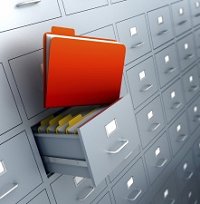Top Records Management Tips for Structuring Your Filing Systems

1) Group all records and information by function/activity e.g.
Academic Administration
- Exam Board Administration
- External Examiner Administration
- Student Assessment Administration
Arranging files by function/activity not by department/team/team member helps to future-proof file structures against organisational change/restructuring. The filing structure should be logical and intuitive so that a new starter who has been employed to work on a specific activity can find all the records relating to that activity easily because it is appropriately named and easy to find.
2) Use your Records Retention Schedule to decide how to structure your filing system so that it is easy to delete records/information in ‘bulk’ (e.g. whole folder rather than individual documents) when it reaches the end of its retention period.
3) Think about who needs access to the files now (for their primary use) and who may need to have access in future (secondary use, possibly for litigation or a future enquiry) and base your folder permissions on this.
4) Ensure that information/records that are sensitive, confidential or contain personal data have the appropriate level of security e.g. password protected or restricted access controls, and not kept in personal storage areas on the network like H:Drive, C: Drives, email, MySite, etc.
If you need to restrict access to specific folders on the S: drive email the IS Service Desk and include the following information:
Full file path of the folder
Details of staff members who need access
Level of access, e.g. read only, modify, full control etc.
SharePoint Administrators can set permissions on folders. For more information see the  Information Services pages.
Information Services pages.
5) Apply consistent naming conventions to documents e.g. all documents in a folder should have a standardised titling system so that they are easy to find. Naming conventions vary according to the activity, for example committee meeting papers have a different naming convention to personnel files or budget reports.
6) Personal drives should only be used to store personal records and documents. Don’t save University records or business information that others may need access to on H: Drives, C: Drives, email, MySite (SharePoint). University records must be stored in shared network areas where the appropriate members of staff can access them.
If you have any queries about anything Records Management related please contact the Governance Adviser (Records Management) – who will be more than happy to assist.
Page last updated 21 March 2019